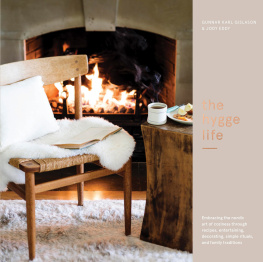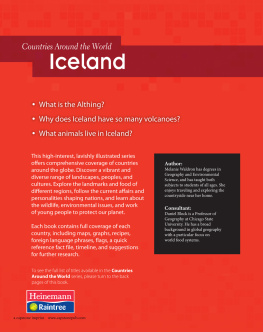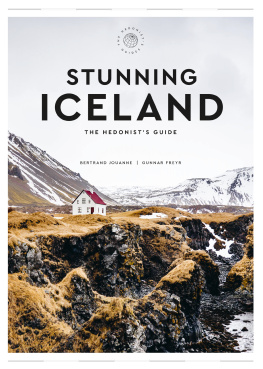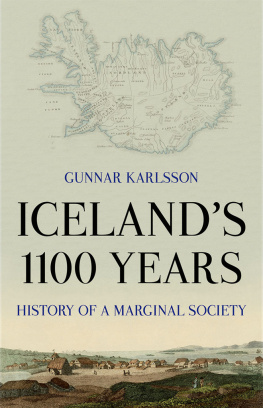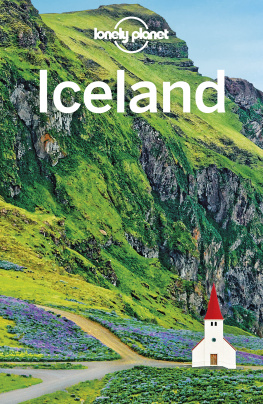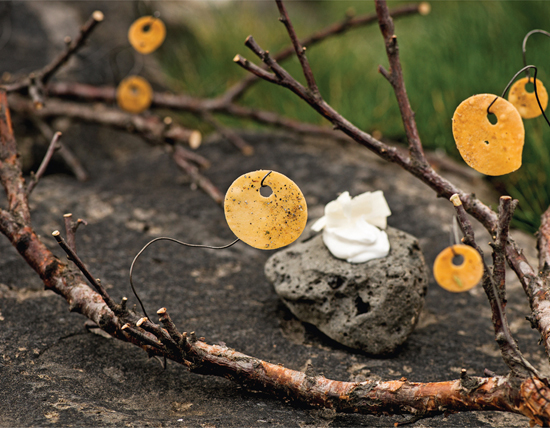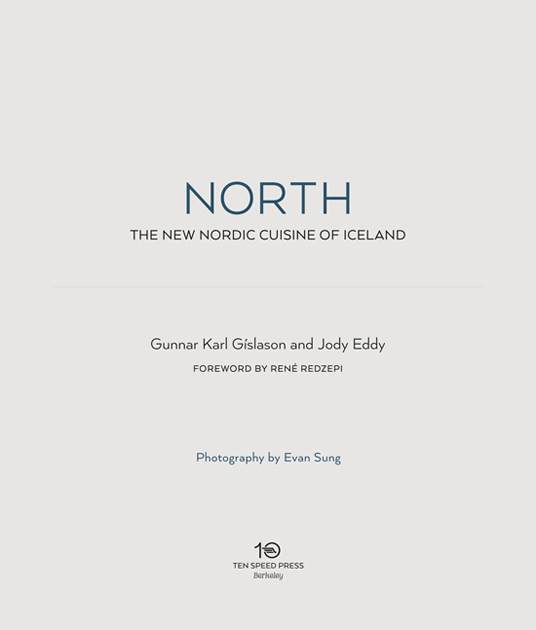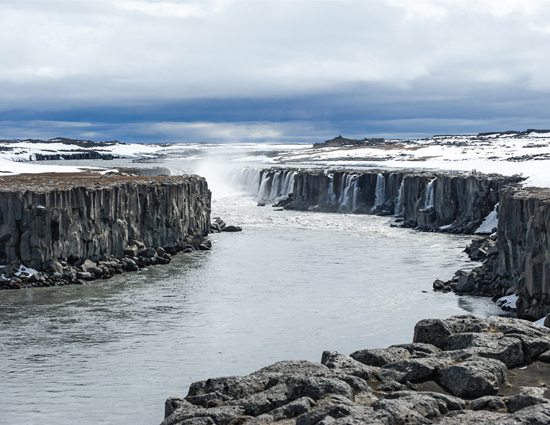Copyright 2014 by Gunnar Karl Gslason and Jody Eddy
Foreword copyright 2014 by Ren Redzepi
Photographs copyright 2014 by Evan Sung
All rights reserved.
Published in the United States by Ten Speed Press, an imprint of the Crown Publishing Group, a division of Random House LLC, a Penguin Random House Company, New York.
www.crownpublishing.com
www.tenspeed.com
Ten Speed Press and the Ten Speed Press colophon are registered trademarks of Random House LLC
Library of Congress Cataloging-in-Publication Data
Gslason, Gunnar Karl.
North : the new Nordic cuisine of Iceland / Gunnar Karl Gslason and Jody Eddy. First edition.
pages cm
1. Cooking, Icelandic. I. Eddy, Jody. II. Title.
TX723.5.I2G57 2014
641.594912dc23
2014003525
Hardcover ISBN: 978-1-60774-498-6
eBook ISBN: 978-1-60774-499-3
Design by Toni Tajima
Original cover design by Emma Campion
v3.1
FOREWORD
Ren Redzepi
The first time I went to Iceland was in 2002. It was late autumn. We swam in the hot springs, visited the beautiful waterfalls, and saw wild thyme growing all over the volcanic plainsand that was just on the ride from the airport into Reykjavk. I thought I had landed in a fairytale. I was blown away, and I remember that my first desire was to eat, to experience all the things Id seen so far, distilled on a plate. I thought to myself, This is going to be good; maybe the meal of a lifetime. As I glanced up at the crystal clear blue sky, I dreamed about all the impossibly good fish and shellfish that would be part of the dinner.
I had virtually no experience with Iceland before that trip. I had heard of Bjrk and the crazy nightlife, of course, and if I remember right, we read the Sagas of Icelanders in school. (But that was in school, so theres a one hundred percent chance I didnt do much listening.) Prior to that first trip, I made the deliberate choice not to investigate the countrys culinary traditions. So when I finally reached the outskirts of the capital, ready for some food, I was filled with a childlike sense of wonder and excitement.
On the ride from the airport, I wasnt shy about telling my host how hungry I was. I need to eat, I reminded him again. Dont you worry, he replied swiftly, in that distinct Icelandic-English accent that can at times seem a bit robotic and stern. I have the right place for you.
We drove for a couple more minutes until we pulled over at Reykjavks premier sushi restaurant. I gave him a skeptical look. Youre feeding me sushi? Ive come here for inspiration, I said. Yes, but this is Icelandic fish they serve here, he told me. My host apparently thought that even though it was sushi, the fact that the restaurant used local fish made it Icelandic. That was the first of several memorable moments for me. Just a few years later, during the early days of Noma, I found myself dissatisfied with making well-known, practically universal recipes with local ingredients. It didnt feel right. I remembered that disconnected feeling I experienced at the Icelandic sushi parlorsimple substitution doesnt make something of a place.
During that first visit, I spent a good week eating around town. There was a tapas place, an Argentinean steakhouse, and, I must admit, a few traditional restaurants. But those seemed more like caricatures than genuine, proud interpretations of tradition. I left Iceland blown away by the people and their spirit, and I was so taken by the wonderfully untouched natural landscape. I remember being on the plane, thinking that untouched was the word that defined the experience. Its a word, and an idea, that would become a major influence on our cooking in Copenhagen: untouched.
When I left Iceland, I didnt think Id be returning for the food.
Years passed. I traveled back and forth a few times, to spend time with the Icelandic people and to seek out that untouched element. The food was always secondary, or even tertiary. Then one day I received a phone call. Ren, something is happening in Iceland, said my friend from the region. Its our friend Gunni, he murmured after a pause, using the nickname weve always had for Gunnar. He wants to open a restaurant that works with the traditions and the history of our place.
Ill be honest: I was skeptical. Sounds good, was my rather curt reply. We started talking about something else.
Not too long after that, I got a package in the post from Gunni. The letter read something like, Hey chef, here are some presents for you. I opened up the box, and it was filled with foodfood that I had seen before, but always in a mass-produced, industrial state. Suddenly I was tasting raw skyr and artisan bread thats baked in hot earth. I tasted dried seaweed with an umami richness thats matched only by certain Japanese varieties. As a chef, it was as if someone had gone to the bottom of the ocean, found a box full of treasures, and handed it over to me for free.
I was in the clouds. I wanted everything. To this day, we use that seaweed throughout our menuto add a little depth to a vegetable stock or to give that little extra bit of flavor to almost anything.
Thats why I think chefs like Gunni and his restaurant Dill are immensely important: they rediscover lost traditions, breathe life into old techniques, and support the good people out there producing food with quality and deliciousness as their only guiding principles.
I havent been back to Iceland for years. Ive actually never eaten at Dill, although Ive met Gunni many times in Copenhagen. But after more than a decade, I feel differently about how my next trip is going to shape up.
I want to go back to Iceland for the food.
IN GRATITUDE
Many people helped to produce this book. Without their generosity, assistance, and encouragement, it would have never materialized. First and foremost, we wish to thank our families, including Freyja Ros Oskarsdttir and our children, Hildur Gunnarsdttir, Gsli Sigurgeirsson, Eric Schatzman, Mary Eddy, and Peter and Evelyn Bragelman.
We must thank the producers who met with us during the course of our research. Without them and their tireless efforts to preserve the culinary traditions of Iceland, we would not have been able to write the book. We will be forever grateful for their generosity and inspiration.
We also wish to thank lafur Agustsson, Mark Anderson, Carrie Bachman, Fredrik Berselius, Ali Bouzari, Cindy and Mark Bragelman, Browns Valley Market (Napa, California), Kristin Casemore, Amy Collins, Paul Duffy, Stephen Dufree, Clancy Drake, Sally Ekus, Inga Elin, Janine Ersfeld, Colleen Foster, Benjamin Freemole, Joe Frillman, Kjartan Gslason, Lynn Grewing, Liz Grossman, Kristbjrg Gudmundsdttir, Claire Handleman, Kate Heddings, Peter Jacobsen, Arnar Jakob, Mary and Lee Jones, Erin Jurek, Kim Kaechele, Gudbjrg Kradttir, David Katz, Agust Kristjansson, Alex Lovick, Richard Martin, Gudfinna Mjoll Magnusdottir, Anne McBride, Bridget McGinty, lafur rn lafsson, Chris Pandel, Sandeep Patwal, Sheila Pearson, Jim Poris, Chandra Ram, Cliff Redeker, Nanna Rognvaldardttir, Peter Rosene, Ken Schumann, Sharon Silva, Toni Tajima, Aaron Wehner, Katie Wilson, and Dina Zobkova.


